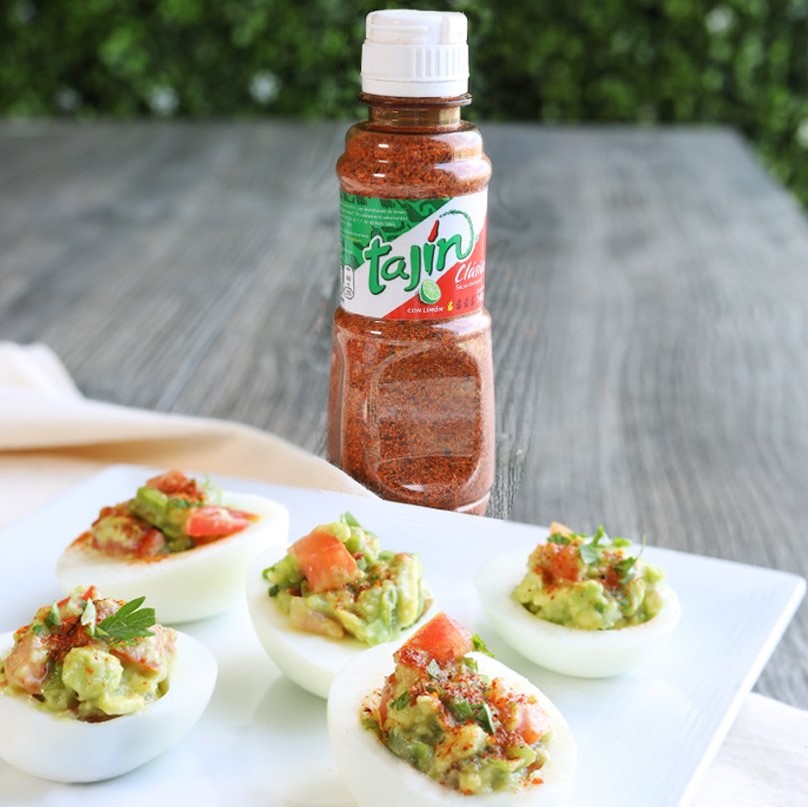Tajin is a popular Mexican spice blend that has gained popularity worldwide in recent years. The tangy and spicy flavor of Tajin makes it a versatile seasoning that can be used to enhance the flavor of a variety of dishes, including fruits, vegetables, and meats.
Despite its popularity, some people have raised concerns about the health implications of consuming Tajin regularly. In this article, we will take a closer look at the ingredients in Tajin, its potential health benefits, and what medical experts have to say about its consumption.
By the end of this article, readers will have a clearer understanding of whether Tajin is bad for you or not.
What is Tajin?

Tajin is a Mexican seasoning blend made from a combination of chili peppers, salt, and dehydrated lime juice. It is commonly used to add a spicy, tangy flavor to fruits, vegetables, meats, and snacks.
Tajin is also known for its unique presentation, as it is often served in a small, round container with a large opening that allows the user to dip their fruit or snack directly into the seasoning.
Nutrition Facts of Tajin
Tajin is a seasoning blend made with chili peppers, salt, and dehydrated lime juice. It is a low-calorie and low-fat seasoning with minimal amounts of nutrients. One teaspoon (3 grams) of Tajin contains the following nutrients:
- Calories: 5
- Total fat: 0 grams
- Sodium: 390 milligrams (16% of the recommended daily intake)
- Total carbohydrate: 1 gram
- Dietary fiber: 0 grams
- Sugars: 0 grams
- Protein: 0 grams
The main ingredients in Tajin include:
- Chili peppers: They add heat and spice to the seasoning blend. Chili peppers contain capsaicin, which has been linked to several health benefits, including pain relief, improved digestion, and a lower risk of certain chronic diseases.
- Salt: It is used to enhance the flavor of Tajin. However, consuming excessive amounts of salt can lead to high blood pressure and other health issues.
- Dehydrated lime juice: It adds a tangy and sour taste to Tajin. Lime juice is a rich source of vitamin C, which is essential for a healthy immune system and skin health.
Overall, Tajin is a low-calorie and low-fat seasoning that adds flavor to dishes without contributing significant nutrients.
Pros and Cons
Tajin is a seasoning that is generally considered to have more pros than cons, as it adds flavor to food without significantly adding calories or fat. Here are some of the pros and cons of Tajin:
Pros:
- Low in calories: One teaspoon of Tajin contains only about 5 calories, making it a low-calorie way to add flavor to food.
- No fat or cholesterol: Tajin is free from fat and cholesterol, making it a healthy choice for people looking to reduce their intake of these substances.
- Contains some nutrients: Tajin contains small amounts of vitamins and minerals like calcium, potassium, and vitamin A, which can contribute to overall health.
- Adds flavor: Tajin is known for its unique flavor, which can enhance the taste of food.
Cons:
- High in sodium: One teaspoon of Tajin contains about 140 mg of sodium, which can be a concern for people who are watching their sodium intake.
- Contains artificial ingredients: Some people may prefer to avoid foods with artificial ingredients, and Tajin contains a small amount of artificial colors and flavors.
Overall, Tajin is a relatively healthy seasoning option, but should be consumed in moderation due to its high sodium content.
Health Benefits of Tajin
Tajin is a seasoning blend made from chili peppers, salt, and dehydrated lime juice. Here are some of the potential health benefits of Tajin:
- Rich in vitamin C: The lime juice in Tajin is a rich source of vitamin C, an important antioxidant that supports immune function and helps protect against chronic disease.
- May aid digestion: Some people believe that the spices in Tajin, particularly the chili peppers, may help stimulate digestion and alleviate digestive discomfort.
- Low calorie: Tajin is a low-calorie seasoning option, with just 5 calories per teaspoon.
- May enhance flavor: Adding Tajin to healthy foods like fruits and vegetables can make them more flavorful and enjoyable, which may encourage people to eat more of them.
What do Health experts say about Tajin?
A review published in the Asian Journal of Pharmaceutical and Clinical Research found that capsaicin, a compound found in chili peppers, may have anti-inflammatory and pain-relieving properties.
It is important to note that Tajin should be consumed in moderation as a seasoning and not as a significant source of nutrients. As with any food or seasoning, individuals should consider their own dietary needs and preferences when incorporating Tajin into their diet.
Who Should Avoid Tajin?
Tajin is a relatively safe spice to consume and is generally considered safe for most people. However, individuals with certain health conditions may need to limit or avoid their consumption of Tajin.
For example, people with high blood pressure may need to avoid consuming too much salt, which is a major component of Tajin. People with kidney disease or those who are taking medications that affect their kidneys should also be cautious with their salt intake.
Additionally, some people may be allergic to certain spices used in Tajin and should avoid consuming it if they experience any allergic reactions.
Alternatives to Tajin
Some alternatives to Tajin are:
- Chile Lime Salt: It is a blend of salt, chile pepper, and lime juice powder, and is often used to add a tangy and spicy flavor to snacks and dishes.
- Gochujang: This is a spicy, fermented Korean chili paste made with chili powder, glutinous rice, and fermented soybeans. It adds a sweet, savory, and spicy flavor to dishes.
- Za’atar: A Middle Eastern spice blend made with thyme, sumac, sesame seeds, and salt. It has a tangy, nutty, and herbaceous flavor and is often used as a seasoning for meats, vegetables, and dips.
FAQ
Is Tajin spicy?
Tajin has a slightly spicy and tangy flavor, but it is not considered to be overly spicy.
Can Tajin be used in cooking?
Yes, Tajin can be used in a variety of recipes, including as a seasoning for meats, vegetables, and fruits, as well as in sauces and marinades.
Is Tajin gluten-free?
Yes, Tajin is gluten-free, as it does not contain any wheat, barley, or rye ingredients.
Is Tajin vegan?
Yes, Tajin is vegan, as it is made from plant-based ingredients and does not contain any animal products.
What are some ways to use Tajin in recipes?
Tajin can be used as a seasoning for a variety of dishes, including grilled meats, roasted vegetables, salads, and fruit cups. It can also be used as a rim for cocktails or as a garnish for drinks.
Conclusion: Is Tajin bad for you?
As we have seen throughout this article, Tajin is a seasoning that is rich in essential vitamins and minerals that are beneficial for your health. It is a low-calorie option that can add flavor to your dishes without adding extra calories.
Tajin is made with simple ingredients that are generally safe for consumption, and it has been a part of traditional Mexican cuisine for centuries.
Overall, Tajin can be a healthy addition to your diet when used in moderation. However, as with any food or seasoning, it is important to be mindful of portion sizes and not to overconsume. In conclusion, Tajin is not bad for you, and it can be enjoyed as part of a healthy and balanced diet.
References
1. Villa-Rivera MG, Ochoa-Alejo N. Chili pepper carotenoids: Nutraceutical properties and mechanisms of action. Molecules. 2020;25(23):5573. https://www.mdpi.com/1420-3049/25/23/5573
2. Edwards A. Salt, salt substitutes, and seasoning alternatives. Journal of Renal Nutrition. 2008;18(6):e23-e25. https://www.jrnjournal.org/article/S1051-2276(08)00388-9/abstract
3. Anil A, Haponiuk JT, Kunnirikka S. Seasoning, herbs, and spices. In: Gopi S, Sukumaran NP, Jacob J, Thomas S, eds. Natural Flavours, Fragrances, and Perfumes: Chemistry, Production, and Sensory Approach. Wiley Online Library; 2023:133-146:chap 8. https://onlinelibrary.wiley.com/doi/abs/10.1002/9783527824816.ch8
4. Seong P-N, Seo H-W, Kang S-M, et al. Beneficial effects of traditional seasonings on quality characteristics of fermented sausages. Asian-Australasian Journal of Animal Sciences. 2016;29(8):1173. https://www.ncbi.nlm.nih.gov/pmc/articles/PMC4932572/
5. Baudrand R, Campino C, Carvajal C, et al. High sodium intake is associated with increased glucocorticoid production, insulin resistance and metabolic syndrome. Clinical Endocrinology. 2014;80(5):677-684. https://onlinelibrary.wiley.com/doi/abs/10.1111/cen.12225
6. Carr AC, Maggini S. Vitamin C and immune function. Nutrients. 2017;9(11):1211. https://www.mdpi.com/2072-6643/9/11/1211
7. Singh S, Uddin M, Khan MMA, Chishti A, Bhat U. Therapeutic properties of Capsaicin: A medicinally important bio-active constituent of Chilli Pepper. Asian Journal of Pharmaceutical and Clinical Research. 2022;15(7):47-58. https://journals.innovareacademics.in/index.php/ajpcr/article/view/44405
8. Sasaki N. High blood pressure and the salt intake of the Japanese. Japanese Heart Journal. 1962;3(4):313-324. https://www.jstage.jst.go.jp/article/ihj1960/3/4/3_4_313/_article/-char/ja/
9. Kwon DY, Chung KR, Yang H-J, Jang D-J. Gochujang (Korean red pepper paste): A Korean ethnic sauce, its role and history. Journal of Ethnic Foods. 2015;2(1):29-35. https://www.sciencedirect.com/science/article/pii/S2352618115000074
10. Alwafa RA, Mudalal S, Mauriello G. Origanum syriacum L.(Za’atar), from raw to go: A review. Plants. 2021;10(5):1001. https://www.mdpi.com/2223-7747/10/5/1001
Check out some of our recently published articles:

Leave a Reply